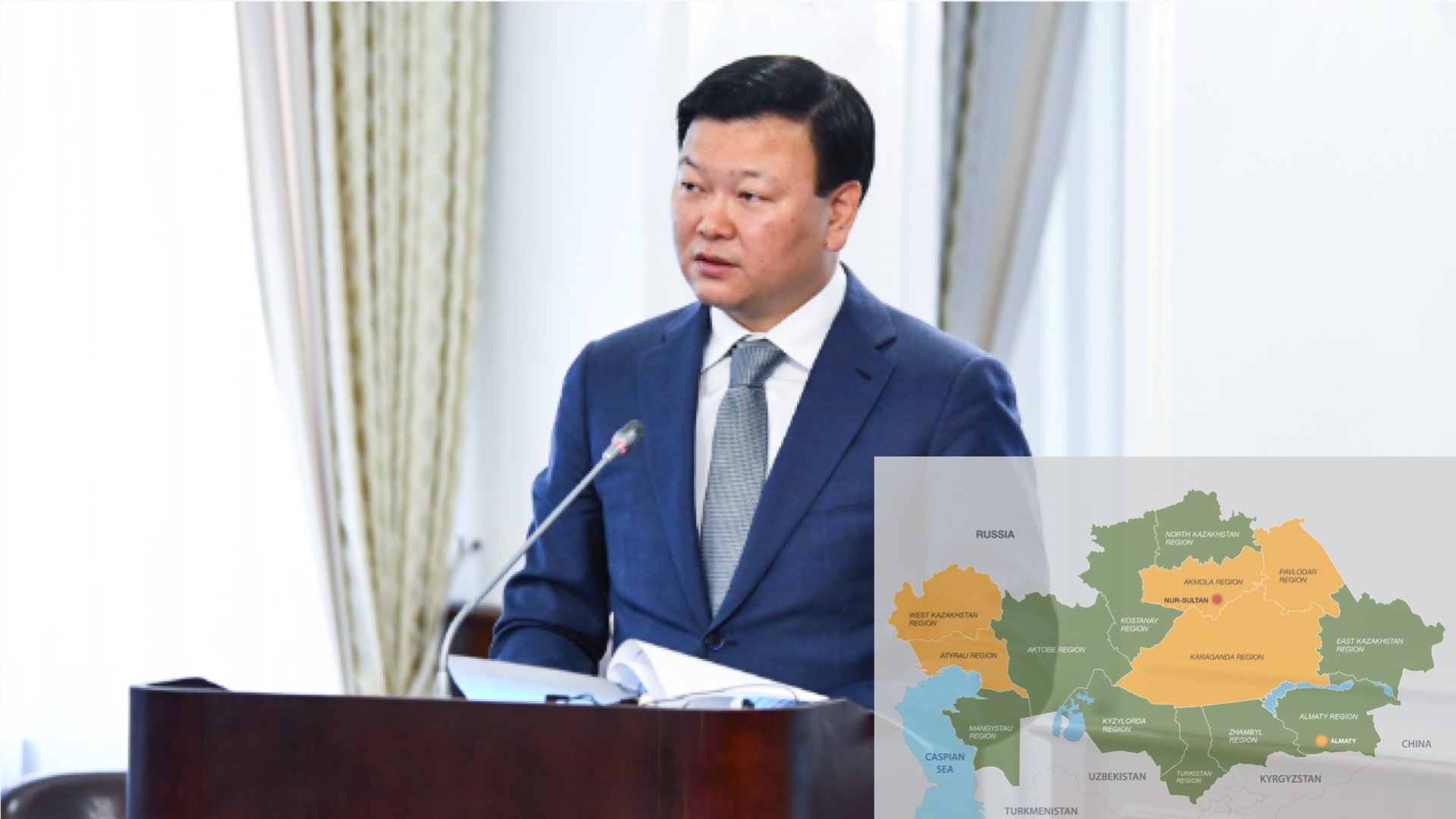NUR-SULTAN – Though the coronavirus infection does not seem to be going anywhere, there are some signs of improvement in Kazakhstan. Only the Kazakh capital city of Nur-Sultan is left in the high-risk red zone, said Kazakh Minister of Healthcare Alexey Tsoy at a Junе 10 government meeting.

Kazakh Minister of Healthcare Alexey Tsoy. Photo credit: primeminister.kz. Click to see the map in full size.
Six regions – Almaty city, Atyrau, Pavlodar, West Kazakhstan, Akmola, and Karaganda – are in the yellow zone, while the remaining ten regions are in the green zone.
Kazakhstan moved to the green zone on June 6. As of June 10, there were 397,976 COVID-19 positive and 55,999 cases of coronavirus pneumonia.
“Overall, the incidence of coronavirus infection is going down. The number of registered cases over the last week decreased from 11,000 to 8,000 cases, or 1.3 times compared to last week,” said Tsoy.
He also said the R0 value, which refers to the average number of people one infected patient can infect, stands at 0.84.
Nationwide, infectious beds have a 24 percent occupancy rate and intensive care beds are at 21 percent.
“Almost in all regions, there is a decrease in the occupancy of infectious disease beds, including by four times in Almaty city, three times in the Aktobe Region, 2.5 times in Almaty Region, two times in Turkestan, Kyzylorda and Zhambyl regions,” he added. Mass vaccination also continues. Kazakhstan currently has four available vaccines – Russia’s Sputnik V, the locally produced QazVac vaccine, Hayat-Vax produced in the United Arab Emirates based on China’s Sinopharm technology, and China’s CoronaVac vaccine that was delivered at the beginning of June.
Tsoy explained that nearly 3.6 million doses of vaccine have been used. Close to 2.4 million people, or 24 percent of the eligible population, received at least one dose, and 1,264,247 people have been fully immunized against the virus.
“Vaccination sites have a sufficient number of vaccine doses – around 1.2 million doses of the first component and 835,000 doses of the second one. Vaccine supplies continue,” he added.

